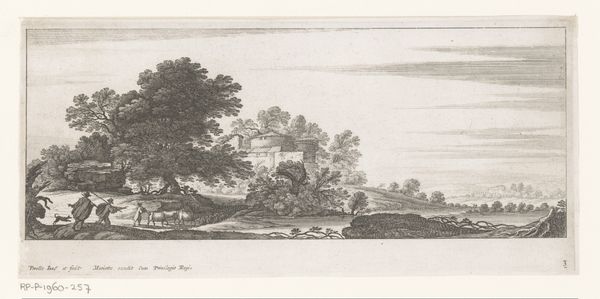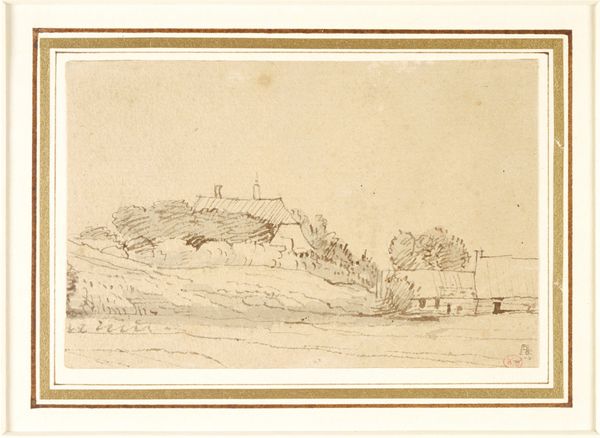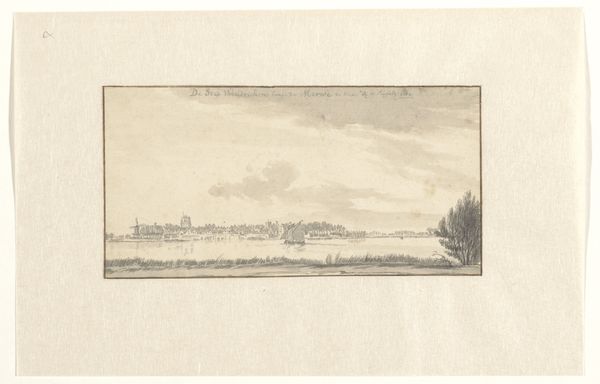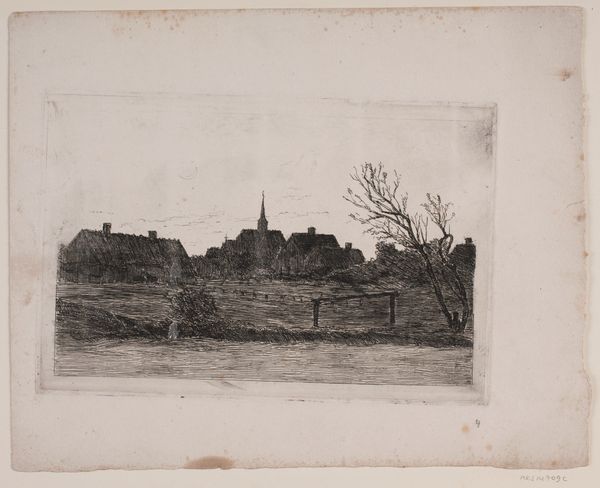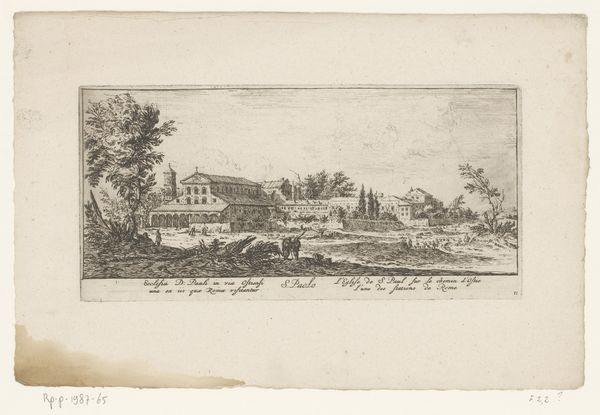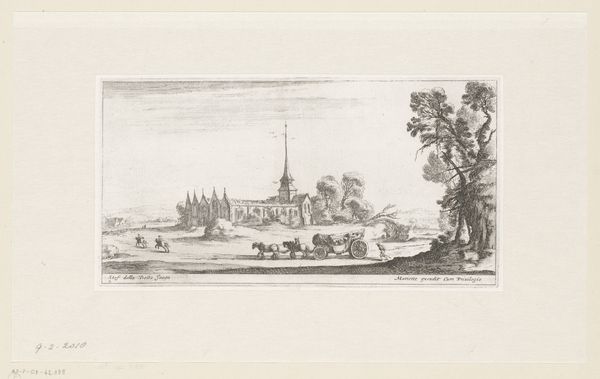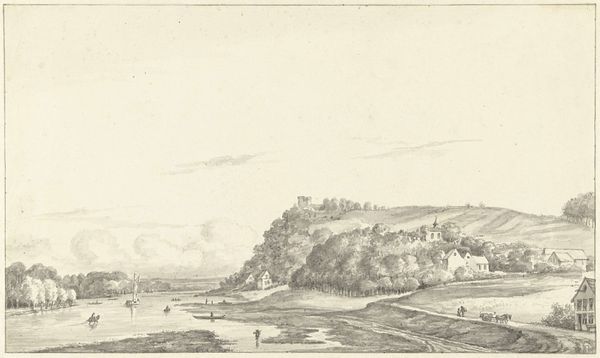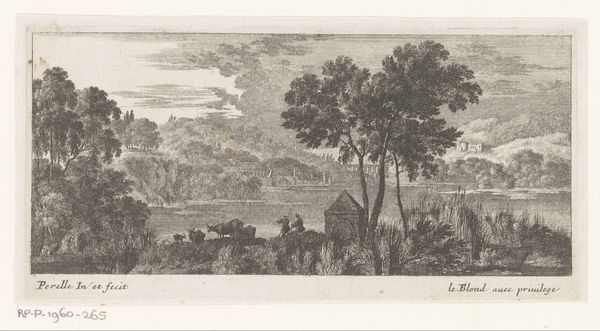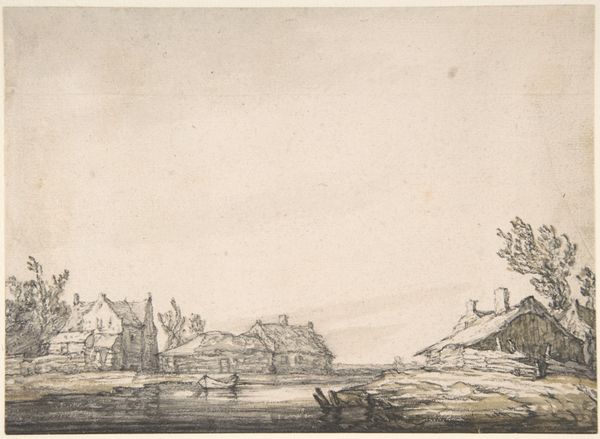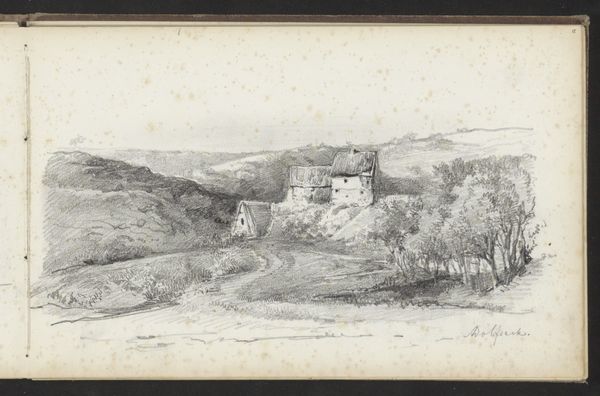
Dimensions: 1 9/16 × 5 1/16 in. (3.97 × 12.86 cm) (image)2 5/16 × 6 1/4 in. (5.87 × 15.88 cm) (sheet)
Copyright: Public Domain
Curator: Take a look at "Dunstaffnage," an etching and engraving by John Clerk of Eldin, likely created sometime between 1770 and 1782. It’s currently held here at the Minneapolis Institute of Art. What's your initial read? Editor: Haunting, yet incredibly still. It reminds me of a distant memory, a place almost forgotten, rendered with such delicate precision that it feels more like a whisper than a statement. Curator: You've picked up on its inherent quietude. Clerk’s meticulous use of line creates such atmospheric perspective and conveys that very sensation of looking into the past. The details, like the ruined castle itself, evoke a real sense of melancholy. Editor: Exactly. I'm drawn to the strategic deployment of hatching— it’s not just representing forms, but imbuing them with an almost spectral quality. Look at the way the light fades from the foreground into that misty background. Curator: Absolutely, Clerk was clearly thinking about semiotics! Consider the composition too: that almost centrally located ruin set against the backdrop of water and distant hills, it presents us with what seems like a commentary on time, memory and decay. The landscape isn’t just a backdrop, it is central. Editor: It’s more than just documenting the site. There’s a deeply personal interaction happening; it's like he's wrestling with notions of heritage. It really captures a sort of Romanticist view. It makes me wonder about his mood. I have this picture in my head of him outside battling midges to try to draw that foliage... Curator: I imagine he might have. Yet, the execution suggests something more than documentation – an emotional resonance, a personal quest. His print manages to condense the epic quality of the landscape. You can't beat a nice etching. Editor: It has an uncanny way of drawing me into its world, of allowing me to co-experience the artist's encounter with Dunstaffnage centuries later. That, for me, is why art endures, the opportunity for us to time travel... or at least, to feel we have done so.
Comments
No comments
Be the first to comment and join the conversation on the ultimate creative platform.
